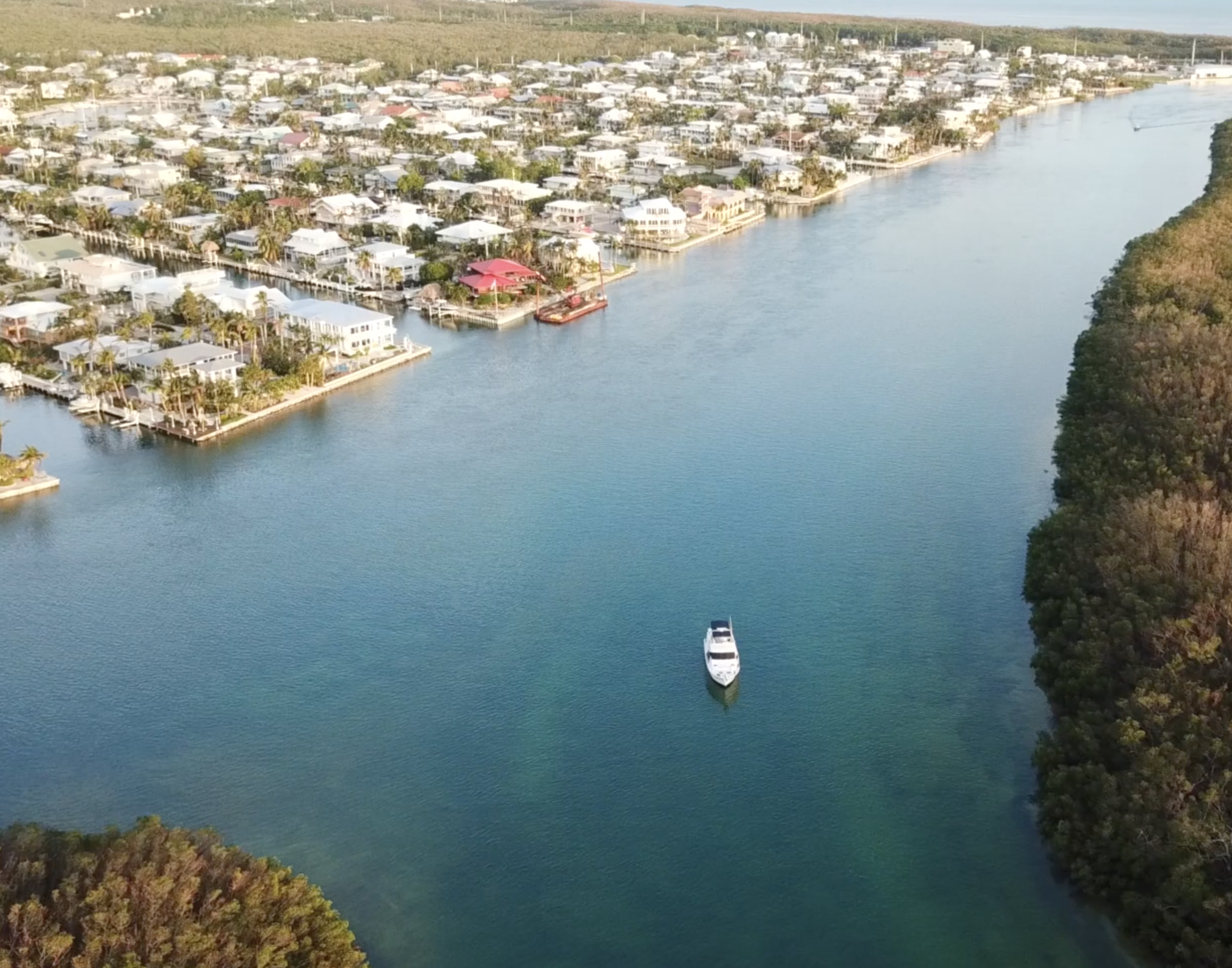
We’re almost caught up! This post takes us back to Marathon post-Irma, leaving our new community and continuing the journey. Just one more episode (I think) and the travelogue will be almost real time again. Whew! Thanks for your patience with the constant shift in time line.
When we last left our Great Loop travel journal entry, we had just returned to Y-Not to find her relatively unscathed from Hurricane Irma. We started clean-ups and figuring out just what was next for us.
Saying Good-Bye to Marathon And Continuing the Adventure
As always, the video version:
Post-Irma Marathon
We made some live posts during this time frame sharing what it was like to return to a disaster area. Here’s some of those posts:
- Moments of Normal Returns to The Keys: Burdines Waterfront Re-Opens
- Back in Marathon Post-Irma: Re-United with Y-Not
- Hurricane Irma Recovery Update: It’s October Already?!?!
Pictures and video only convey so much.
The smells. The mental state of all around us. The ebbs and flow of depression, hope and fear. The sounds of tarps waffling in the wind. And the emptiness in the eyes of those who lost everything. The feeling of debris crackling under every step you take becoming ‘normal’.
To see the general goodness of humanity shining through, and community coming together.
These will be things that will forever be etched in our memory. Things that words, pictures and videos can never adequately convey – but we know, anyone who has ever been through something similar knows in the depths of their souls.
Our location at Burdines was right at the mouth of Boot Key Harbor, one of the harder hit areas for boaters and a base of operations for the salvage operations. Every day we watched dozens of boats being plucked from the sea floor and mangroves, drained and then hauled on land for likely destruction.
Every one of them a home, a hope or a dream. Sunk. Lost. Crushed.
Being in the small minority of boats that made it through the storm (perhaps only 20-25% did) brought on survivor’s guilt. We honored the feeling, let it flow through us and then acted to pay it forward.
We pitched in with cleaning up debris whenever we could. We donated monetarily to relief efforts (and still do, it’s an ongoing recovery). We handed out cash to those in need. We supported local businesses opening up.
And we rented a car for a couple weeks so we could volunteer our time in official capacities. We served several shifts down at the Big Pine Key disaster recovery center, manning the National Guard muck removal station. We worked one-on-one with those impacted to get them help with clean up efforts.
More so, I think our role was to be someone to talk to – since it was a slow pace, we could take the time to connect.
To say our time in the Keys was a sobering experience, would be an understatement. Certainly not the adventure we thought we were heading into when we left Fort Myers.
While not a glamorous travel story by any stretch of the imagination, it is one of the most remarkable and humbling experiences in our travels and in our lives. We are forever changed by it, and our capacity for compassion expanded.
About 6-weeks after the storm – it seemed the local channels were open enough to safely make cautious passage. Having repairs to attend to on Y-Not that could not be adequately addressed in overloaded local boat yards, we made the decision it was time to leave this place that would forever be entrenched in our hearts.
First Stop: Lignumvitae Key – Islamorada, FL
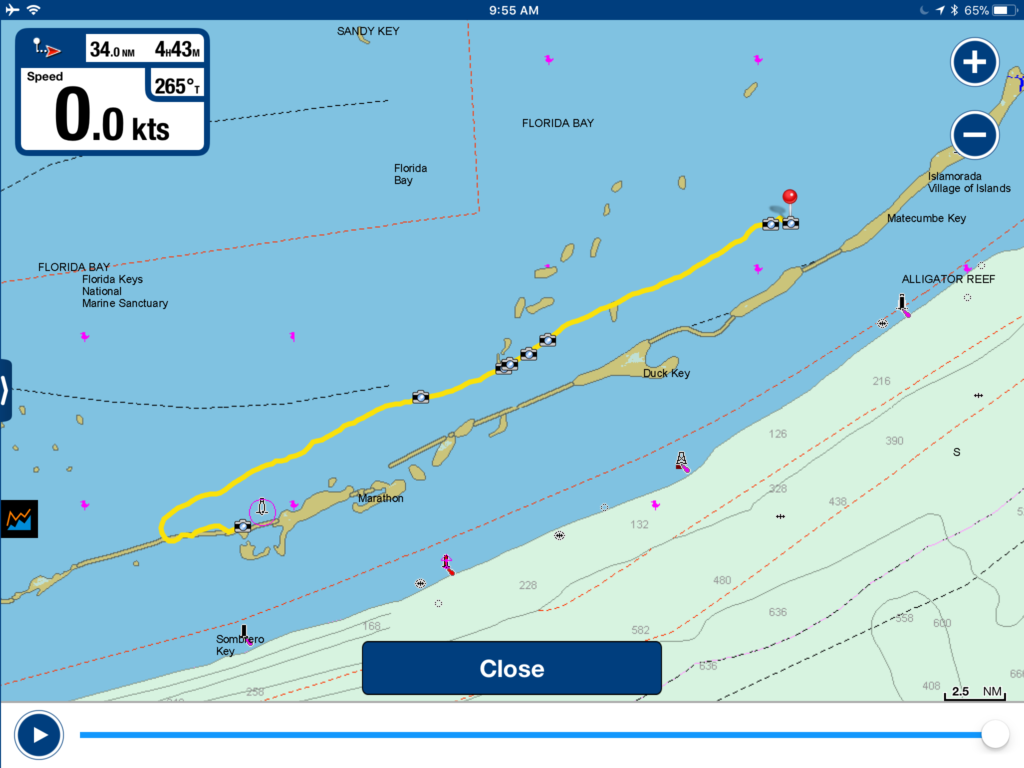
We had made contact with Enzed Yacht Management in Ft. Pierce, and hired owner Captain Geoff Gow to be our personal project manager through the Irma repairs and upgrades we wanted to accomplish.
While we knew we could likely manage on our own, we also know from past bus retrofits – just how much is involved. Being boating newbies and being seriously back-logged in our own worklife due to Irma – we knew help would be priceless to keep projects on track and having an unbiased expert to tap into.
We had set a general time frame of arriving in his area in mid-November for haul-out, giving us a couple of weeks to make a leisurely passage.
So on October 23, we decided to take a weather window to make some miles north before the first cold front of the season was on its way.
With a heavy heart, we said our until next times to our community in Marathon and watched Burdines disappear out our rear view.
So off we set, making an easy 34 mile passage to our overnight anchorage off of Lignumvitae Key. Unfortunately, our arrival was not during the state park’s open days, so we stayed aboard for the evening.
A lovely little anchorage with protection from the southerly winds.
But the storm system approaching would be shifting the winds from the north, so the agenda for the next day was to find a protected anchorage to ride the cold front out in. We had a couple potentials on our radar (mental radar that is, as actual radar was not yet installed).
In Search of a Protected Anchorage: Snake Creek off Plantation Key
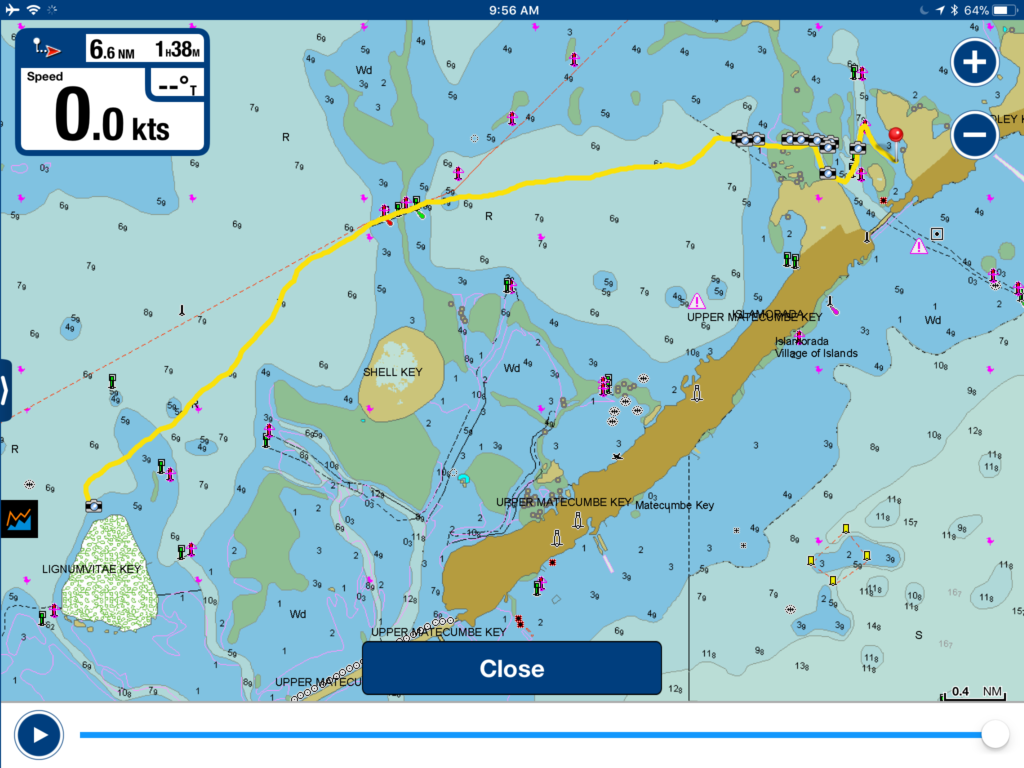
Unlike trying to find a boondocking spot or RV campground, finding the right place to moor your boat is not nearly as easy sometimes. You have to pay attention to the weather and take into account predicted wind speeds & direction, current flows, tidal shifts, sea floor make-up, depth and room for your boat.
This would be our first time seeking shelter in an anchorage to ride out a weather system.
Using Active Captain and Waterway Guides, we had pinpointed two possible anchorages that had reports of shelter from northerly and westerly winds – which were the predicted shifting directions.
We headed out to Wilson Key first, just 6.6 nm miles ahead. Given that the reviews noted a tricky entrance, we opted to anchor outside the channel entrance and fly our drone (a DJI Mavic Pro) in for aerial surveillance.
This would give us intel on the route of entry, any submerged debris that might block our access and see if there would be room for us.
All that checked out, so we decided to give it a shot.
Upon entry however, we discovered that most of the boats that showed from our sky view were actually submerged in the shallows after Irma. We decided to try to find a place to drop the hook anyway.
After a couple of attempts of setting the anchor, a small blow came through – thank goodness the engines were still on because we quickly started dragging. Turns out, the remaining open spots were grass beds – not ideal for anchoring.
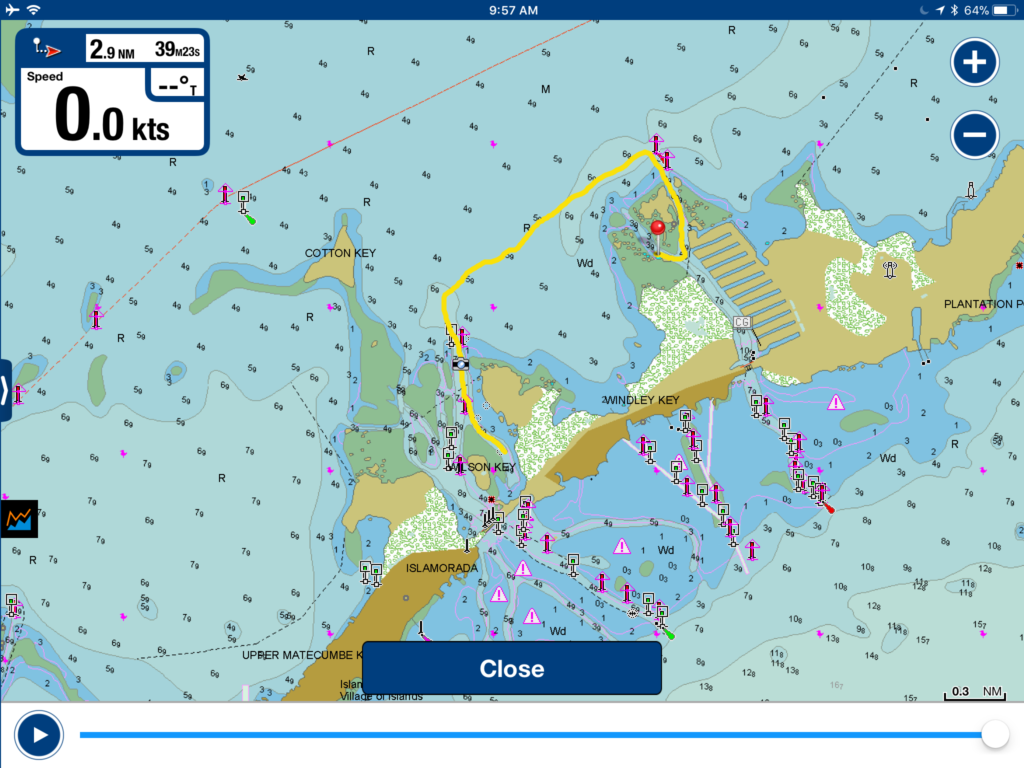
We decided to ditch the idea and move on to our Plan B anchorage just a couple miles north at Snake Creek.
This anchorage is off a ritzy canal neighborhood, and in a small side tributary. There were limited reviews, but enough to give us hope.
While narrow, we made it work.
The first night, we stayed further out in the mouth of the entrance – which gave us more room in the current winds to swing around our anchor. We only had slight dragging of the anchor, and the storms overnight kept us on high alert all evening long.
The next day, the winds would be fully shifting direction and we’d need to move further into the creek for better protection. We decided to first however duck back out into the Florida Bay and potentially make some miles north to another anchorage.
It didn’t take long for us to realize just how sheltered Snake Creek was from the winds – it was pretty darn rough once we got just a few feet on the other side of our little mangrove island. Never mind when we reached the bay.
We turned ourselves right back around, and set anchor on the side of the creek in perfectly calm protection.
The challenge however was with the narrowness of the creek and 11′ water depths, we could not set a proper 10:1 scope (110 feet of chain/rode needed) for storm conditions. But with the wind protection, thankfully we would not need it and felt comfortable with an overnight scope of 7:1. A reminder we need to practice with Bahamian mooring techniques for just such situations to reduce our swing space needs.
This kept us swinging with the tidal currents in a half moon shape against the side of the creek, without blocking entry for occasional local traffic (including from the local Coast Guard station within view of our spot – a local coastie actually reached out on social media and told us we picked a great spot for the storm).
If we hadn’t ducked out into the bay or been able to see a nearby flag whipping about, we might not have appreciated just how well protected this little spot was. We barely felt a wisp of wind the entire storm.
By the time the winds calmed down out in the Bay, Invest 93L (which became Tropical Storm Philippe) had shifted its path to come right across the Keys. Fun.. another tropical system.
We decided, enough was enough – and we made arrangements to head to a nearby protected marina just in case. But that adventure will be in the next episode.
Great Loop Log (10/25/2017)
- Distance: 276.1 nm
- Stops: 20
- Marina Nights: 162
- Anchored Nights: 18
- Bridges : 12
- Locks: 0
Other Travel Posts in this Great Loop Travel Series:
- The Keys:
- South to the Keys:
- The Great Loop: South to the Keys (Part 1) — Ft. Myers to Naples
- The Great Loop: South to the Keys (Part 2) — Naples to Marco Island
- The Great Loop: South to the Keys (Part 3) — Cruising Ten Thousand Islands
- The Great Loop: South to the Keys (Part 4) — Everglades National Park — Little Shark River & Cape Sable
- Sometimes Nomads Need to Grow Some Barnacles (Two Months in Fort Myers)
- Starting the Great Loop — First Adventure: Punta Gorda, FL to Fort Myers, FL
View all our Great Loop Posts
on our new Interactive Map!
Current Status:
We have now been at SeaLab Marina in Miami for a month today. Repairs from our channel marker incident have been completed, and we’re just now wrapping up some of the upgrades/refits we had planned for Ft. Pierce (our project manager Geoff has been *amazing* in helping us remotely to navigate all of this.)
It’s been a crazy month living on the hard in a boat yard, and we are so ready for this chapter to come to a close. We’ve done a couple of live video casts from the yard updating on the projects if you’re so included.
We may be splashed as soon as Friday (we’ll see.. lots of little things have to come together before then), and we are closing in on where we’ll be storing the boat for the winter.
We have some other travel plans shaping up, including an extended RV trip to Texas in February for the RV Entrepreneur Summit, where we’re presenting.















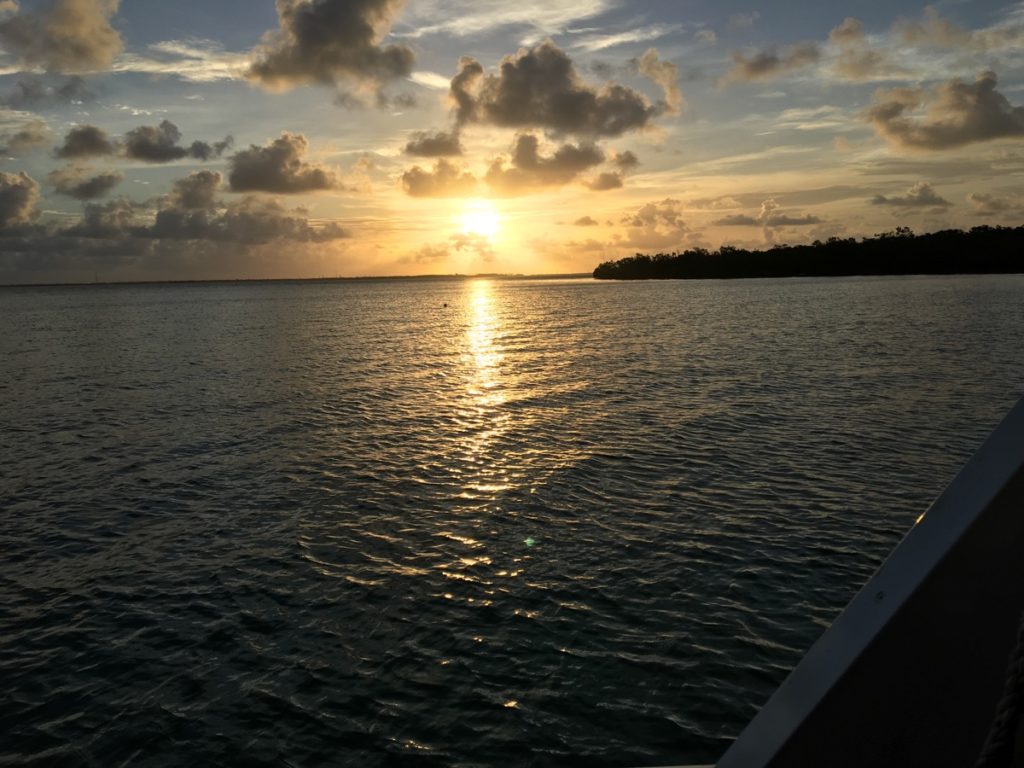
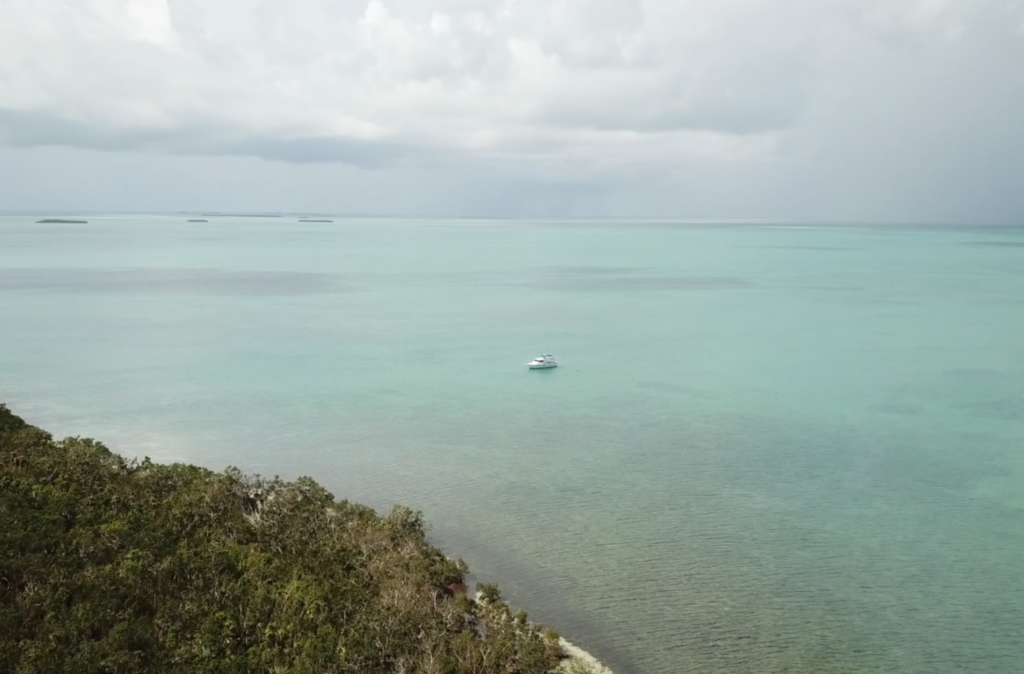








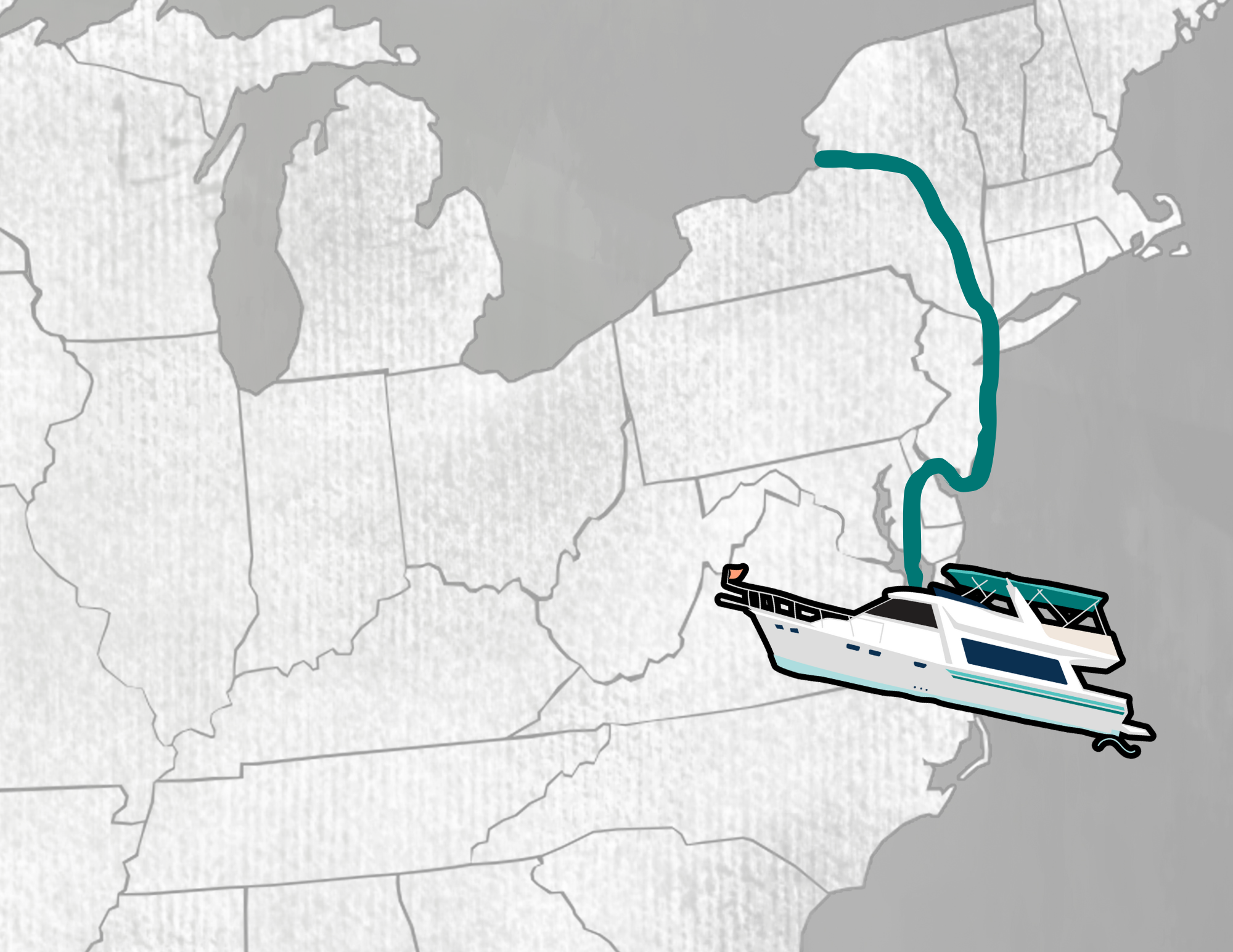
Very nice video! On your last live video you mentioned how much work “produced” videos are (don’t I know it — that was my career) and that you were getting a lot of feedback that more of your followers preferred the live presentations to the produced ones. Well, that’s not my opinion. I much prefer the produced videos. And you’re getting better and better at it. I noticed that this one had a lot of nice drone inserts in addition to sound-under and even some music under.
Thank you and keep up the good work. And stay off the bottom. That’s bad. Although it makes those of us who have been through the same things (bent props, “living on the hard”, etc.) feel slightly better.
It’s interesting how many folks chime in that they prefer the produced content… but yet how few views these videos (and blog reads) get in comparison to our other content. Including this one.
It really comes down to our quality of life. Creating these videos has a huge impact – from remembering to take footage (which distracts from our experience) to spending hours producing the videos (which distracts from getting out there having more experiences). Simple fact of time vs. impact is that our live content is reaching more people for less impact on our lives.
We’ll for sure finish out documenting this season before we store the boat for the winter. But we’re very much on the fence if these travelogue videos are worth the effort.
I did a bicycle ride from Key Largo to Key West late in 2005 after the hurricane (Wilma). I distinctly remember all the cars flooded cars being hauled out of Key West 2-3 at a time. The debris piled up along the street was much the same. I’ve toyed with the Great Loop idea too and will be following your trip with great interest.
You can’t be leaving so early you haven’t tried every Cuban restaurant in the neighborhood
I’m not trying to be a pain in the ass when I say this,, but,,, when you put the boat in the water. have them line The shaft coupling up to the transmission One more time
While you were on the hard you don’t know if the boat twisted. once it settles in the water that it’s natural state
Hope you enjoy your trip down to Miami River
Yup, our mechanic is coming on board once we’re in the water and sea trailing with us to make adjustments.
great job guys, life is a adventure, hang in there, better cruising is just around the bend. Rich